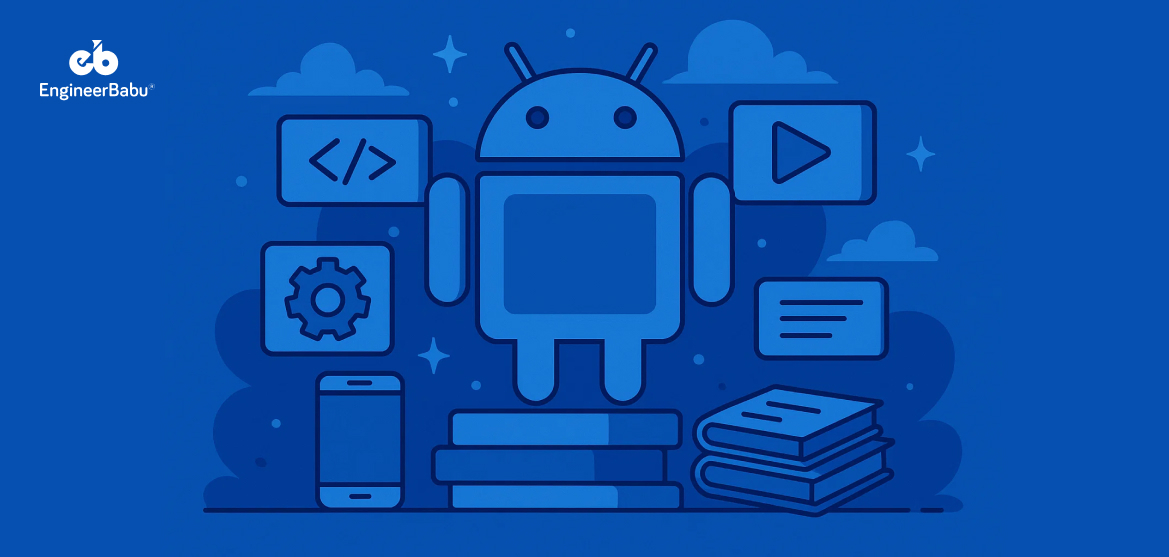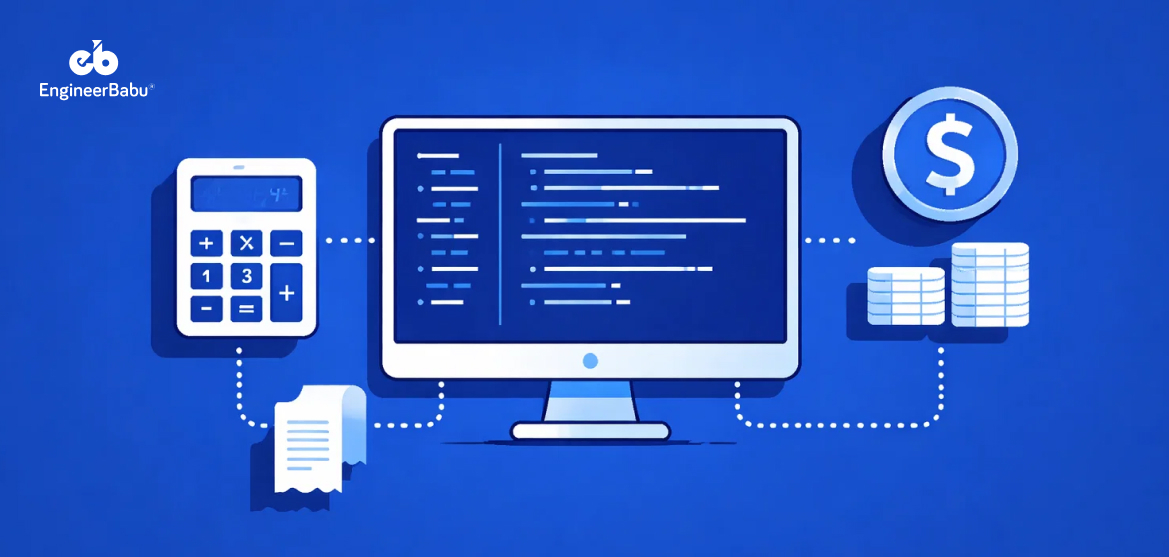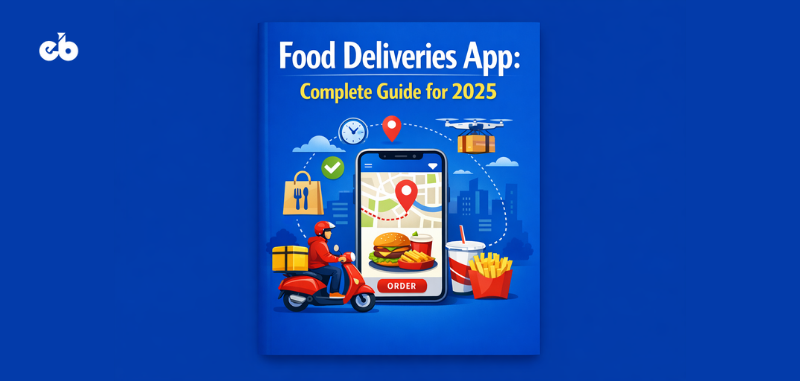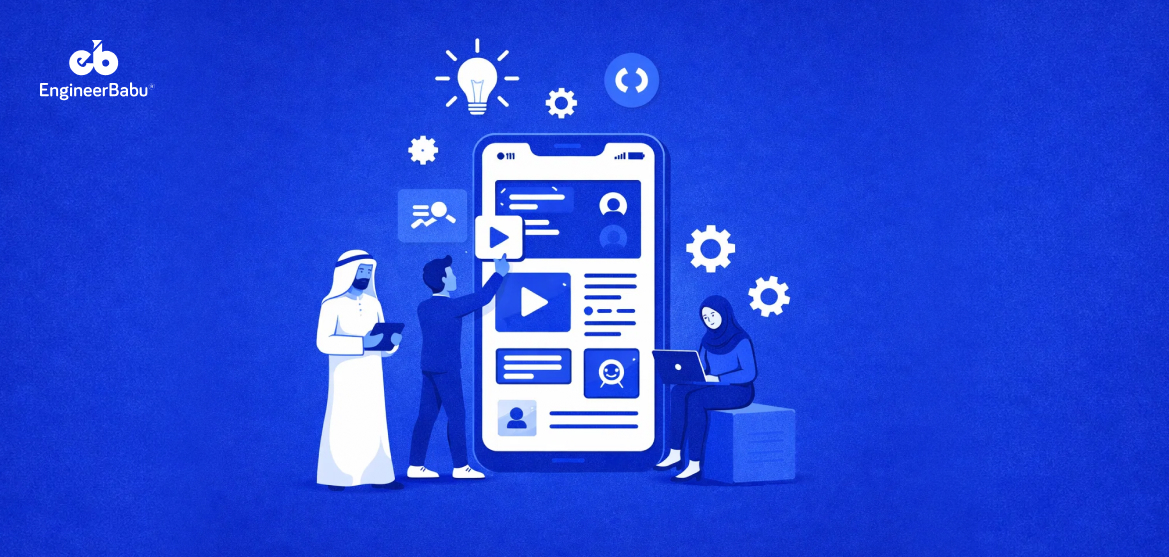Every successful Android app relies on more than just clean code. It depends on well-chosen libraries that handle the core functions – network calls, image loading, animations, storage, and more.
These libraries save development time, reduce bugs, and improve app performance. They are used across thousands of real-world projects because they solve specific technical problems efficiently.
In this article, you’ll find 15 of the most widely used Android libraries in modern mobile app development. Each one is practical, well-supported, and helps development teams deliver faster and build better apps.
If you’re building an app or working with a development partner, these are the tools you should expect to see in their stack.
Best Android Libraries for Mobile App Development
1. Jetpack Compose
Jetpack Compose is Google’s official UI toolkit for building native Android interfaces using Kotlin. Unlike the traditional XML-based approach, Compose lets developers write UI code declaratively. That means the UI automatically updates when the underlying data changes, reducing the chances of bugs caused by inconsistent UI states.
For mobile teams, this speeds up android app development and simplifies feature updates. UI elements like lists, buttons, cards, and animations can be created with less code and more flexibility. Compose also integrates tightly with other Jetpack components like ViewModel, Navigation, and LiveData, making it easier to maintain a consistent architecture.
Many new apps are now being built entirely with Compose, especially when the goal is fast delivery and a modern, responsive user interface. Google itself has adopted Compose across several of its own apps, which is a strong signal of its long-term support.
Retrofit
Retrofit is a widely used HTTP client for Android that simplifies how apps connect to APIs. Instead of manually handling network calls, parsing JSON, and managing threads, Retrofit lets developers define API endpoints as simple Kotlin interfaces. It handles the rest, which includes sending requests, receiving responses, and converting data into usable models.
It supports popular converters like Gson and Moshi, making it easy to work with JSON-based APIs. Retrofit also works seamlessly with Kotlin coroutines, which means your app can perform network operations in the background without blocking the UI.
For apps that rely on real-time data, authentication, payments, or any kind of backend communication, Retrofit makes the process faster and more reliable. It reduces boilerplate code, improves readability, and lowers the chance of introducing network-related bugs.
OkHttp
OkHttp is a powerful HTTP client that handles all the underlying network operations for Android mobile app development. It’s often used alongside Retrofit, serving as the engine that actually sends and receives network requests. While Retrofit simplifies the interface, OkHttp provides fine control over how network communication works.
It supports features like connection pooling, transparent GZIP compression, caching, and automatic retries on connection failures. OkHttp also allows developers to add interceptors, which makes it easy to log requests, add headers, or handle authentication tokens without duplicating code across the app.
For apps that need fast and reliable networking, especially those working with APIs, images, or cloud storage, OkHttp ensures stable performance even on slow or unstable connections.
Glide
Glide is a fast and efficient image loading library for Android. It handles image fetching, decoding, and caching with minimal developer effort. Whether the app needs to load images from the web, the device gallery, or a content provider, Glide makes the process smooth and consistent.
One of its key strengths is automatic memory and resource management. It scales images to fit views, recycles bitmaps to reduce memory usage, and handles asynchronous loading to keep the UI responsive. Glide also supports animated GIFs, image transformations, and custom targets, which makes it highly flexible.
For apps with user profiles, product catalogs, social feeds, or any image-heavy interface, Glide ensures that visuals load quickly and reliably, even on lower-end devices or slow networks.
Coil
Coil (short for Coroutine Image Loader) is a modern image loading library designed specifically for Kotlin. It’s lightweight, fast, and built to take full advantage of Kotlin coroutines. That makes it an excellent choice for apps that use Jetpack Compose or follow a coroutine-based architecture.
Unlike some older libraries, Coil is highly optimized for Android’s latest components. It integrates easily with Jetpack libraries and follows Android best practices out of the box. It also supports common features like placeholders, crossfades, and image transformations with minimal setup.
Because Coil is written in Kotlin and has fewer dependencies, it reduces app size and memory usage. This is especially useful in performance-sensitive apps or where APK size is a concern.
Hilt
Hilt is a dependency injection (DI) library built on top of Dagger, designed specifically for Android development. It helps developers manage how different parts of an app depend on each other, without having to manually pass objects around or write repetitive setup code.
With Hilt, common components like repositories, data sources, and view models can be easily injected wherever they’re needed. It works well with other Jetpack libraries and follows the Android app lifecycle, which helps prevent memory leaks and makes testing much easier.
By automating boilerplate setup and handling object lifecycles behind the scenes, Hilt keeps the codebase clean and modular. That’s especially useful for larger apps or when multiple developers are working on different features at once.
Room
Room is Google’s official library for working with SQLite databases on Android. It provides a clean, type-safe way to store and retrieve structured data without writing raw SQL queries all over the codebase.
Instead of managing open connections and cursors manually, developers can define data models and access methods using simple annotations. Room handles the database layer behind the scenes and checks your SQL at compile time, which helps catch errors early.
It also integrates easily with Kotlin coroutines and Jetpack components like LiveData and Flow. This makes it easier to build reactive apps where the UI updates automatically when data changes.
Firebase Crashlytics
Firebase Crashlytics is a real-time crash reporting tool that helps teams track, prioritize, and fix app crashes quickly. It collects detailed crash reports, including stack traces, device info, and user actions that led up to the issue, making it easier to understand what went wrong.
Crashlytics groups similar crashes together so developers can focus on the most critical problems first. It also shows how often a crash is happening and how many users are affected. This helps teams avoid guessing and spend their time fixing the issues that matter most.
It integrates directly with Android Studio and the broader Firebase platform, so teams can link it with analytics, performance monitoring, and even user feedback.
Lottie
Lottie is an animation library developed by Airbnb that lets developers render animations from JSON files exported from Adobe After Effects. These animations are lightweight and scalable, which means they look smooth across all screen sizes without affecting app performance.
Lottie allows designers and developers to work more closely. Instead of coding animations by hand, designers can create them visually and hand over a JSON file that plugs directly into the app. This shortens the development cycle and ensures animations appear exactly as intended.
It’s commonly used for loading indicators, onboarding screens, micro-interactions, and splash animations. With just a few lines of code, teams can add engaging motion to an app without slowing it down.
DataStore
DataStore is Google’s recommended solution for storing key-value and typed data locally in Android apps. It replaces SharedPreferences, offering a more modern and reliable way to handle small amounts of data, such as user settings, preferences, and app configurations.
Unlike SharedPreferences, DataStore is built with Kotlin coroutines. This means it performs read and write operations asynchronously, helping avoid performance issues that can occur on the main thread. It also provides better type safety and error handling.
There are two types of DataStore: Preferences DataStore for key-value pairs and Proto DataStore for strongly typed objects. Both options are easy to set up and work well with Jetpack libraries.
Navigation Component
The Navigation Component is part of Android Jetpack and helps manage in-app navigation in a structured way. It handles transitions between screens, manages the back stack, and supports deep linking without requiring developers to write complex navigation code manually.
Using a navigation graph, developers can define all app destinations and the paths between them in one place. This makes it easier to understand the flow of the app and avoids common navigation bugs, especially in complex applications with multiple screens.
It also works well with the Android lifecycle, ViewModel, and Safe Args plugin, which helps pass data between screens more safely and consistently.
ViewModel + LiveData
ViewModel and LiveData are part of Android’s architecture components. They help manage UI-related data in a way that respects the lifecycle of activities and fragments. This means your app won’t lose important data during screen rotations or background-foreground transitions.
ViewModel stores data separately from the UI so it survives configuration changes. LiveData works alongside it by letting the UI observe data changes automatically. When the underlying data updates, the UI/UX design reflects those changes without needing extra code to handle the refresh.
Together, they reduce boilerplate, simplify data handling, and make the app more responsive. This combination also makes it easier to test and maintain the codebase, especially in apps that rely heavily on user interaction or real-time updates.
Kotlin Coroutines + Flow
Kotlin Coroutines provide a simple and efficient way to handle background tasks in Android apps. They make asynchronous programming easier to read, write, and maintain. Instead of using callbacks or complex threading code, developers can write sequential-looking code that runs asynchronously.
Flow is Kotlin’s solution for handling streams of data. It works well with Coroutines and is ideal for tasks like observing database updates, handling user input over time, or processing API responses in a reactive way.
Coroutines and Flow are now standard tools for mobile app development. They help improve app responsiveness and reduce the chances of blocking the main thread, which keeps the user interface smooth and responsive.
LeakCanary
LeakCanary is a memory leak detection library developed by Square. It automatically watches your app during development and alerts the team whenever it detects a potential memory leak. These leaks can slow down the app, cause crashes, or lead to poor performance over time if left unresolved.
What makes LeakCanary useful is that it provides detailed insights into where the leak is happening and what caused it. This helps developers fix the problem quickly without spending hours debugging complex lifecycle or memory management issues.
It’s lightweight and easy to integrate. Once set up, it runs quietly in the background and only reports issues when necessary, so it doesn’t interfere with normal development workflows.
Timber
Timber is a lightweight logging library for Android that helps developers manage log statements in a cleaner and more organized way. Unlike the default Log class, Timber allows for flexible tagging, filtering, and custom log handling, which makes debugging easier during development.
With Timber, developers can plant custom trees to control how logs are handled in different environments. For example, logs can be shown in detail during development and completely disabled or redirected in production. This prevents sensitive data from being exposed in release builds.
It also reduces repetitive code. Instead of manually tagging every log, Timber can automatically include context like class names, making logs easier to read and trace.
Conclusion
Choosing the best Android libraries is one of the most important technical decisions in mobile app development. Each library in this list addresses a specific challenge, such as network communication, local storage, UI rendering, or memory management.
For companies working with external development teams, these libraries signal a modern and reliable approach to building Android apps. They help reduce development time, improve performance, and make long-term maintenance more manageable.
If you’re starting a new Android project or reviewing your current tech stack, this list can serve as a practical reference. These tools are widely supported, well-documented, and used across successful Android applications.
FAQs
1. What are Android libraries, and why are they important in app development?
Android libraries are pre-written code modules that developers use to handle common tasks such as networking, image loading, or data storage. They reduce development time, improve code quality, and allow teams to focus on building features rather than reinventing the wheel.
2. How do I know if my development team is using the right libraries?
You can ask your development team to share a list of libraries included in your project. Look for commonly adopted libraries like Retrofit, Room, and Jetpack Compose. Teams that follow industry best practices usually rely on well-supported, widely used tools that improve performance and scalability.
3. Are these libraries safe to use in production apps?
Yes, all the libraries listed in this blog are open-source, actively maintained, and used in many production-level apps. Before integration, development teams should always review documentation, check for recent updates, and evaluate compatibility with the current Android SDK version.
4. Can using too many libraries slow down the app?
Using unnecessary or poorly maintained libraries can affect performance. However, the right libraries, especially the ones listed here, are optimized for performance and reliability. A well-structured project uses only the libraries it needs, avoiding code bloat or increased app size.
5. Does EngineerBabu use these libraries in their Android development projects?
Yes. EngineerBabu’s Android development team follows modern best practices and uses reliable libraries like Jetpack Compose, Retrofit, Hilt, and others featured in this article. This ensures faster delivery, cleaner architecture, and better long-term performance for every app they build. Whether you’re launching an MVP or scaling an enterprise solution, their team uses the right tools to deliver dependable mobile products.




